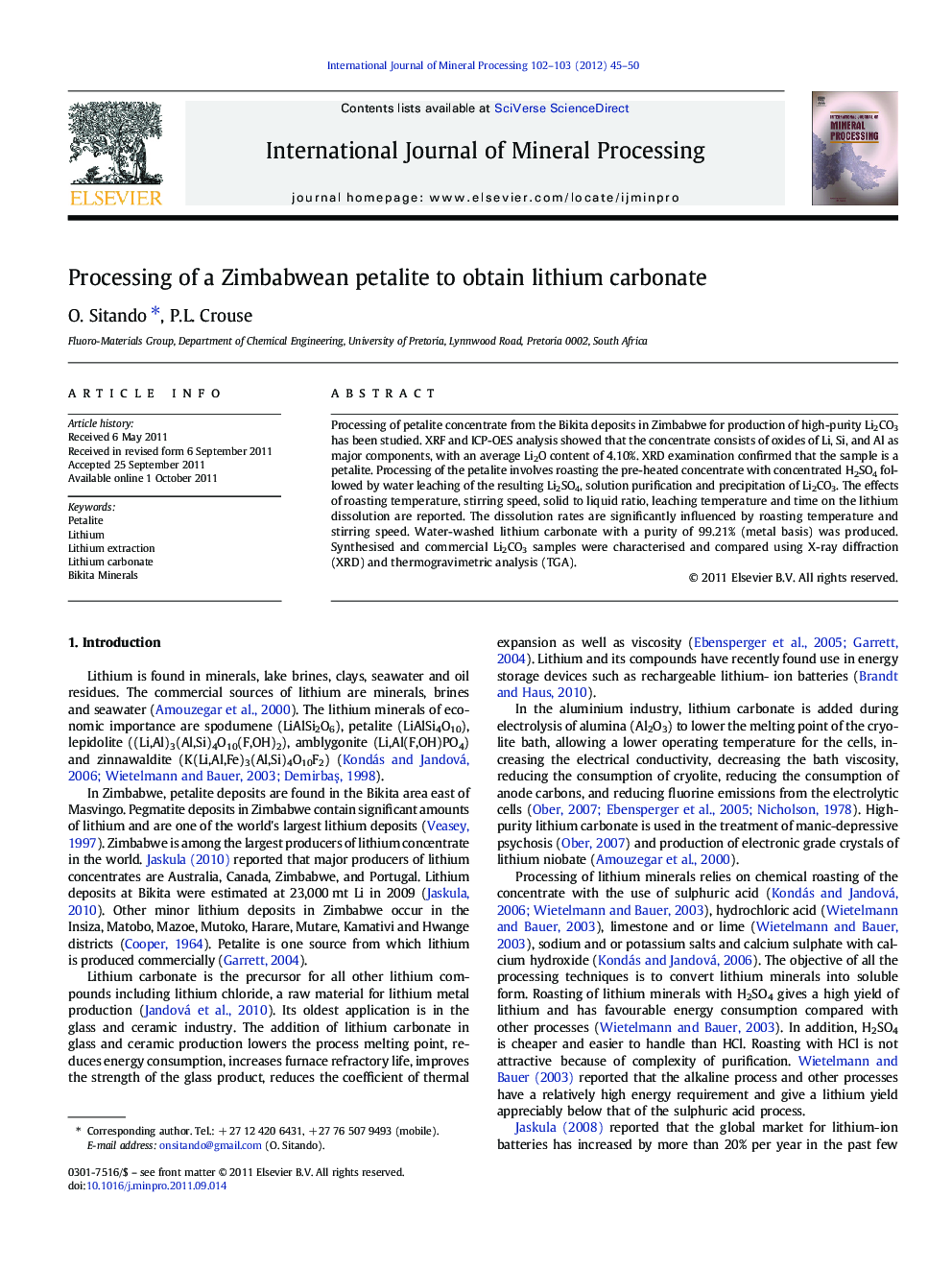| Article ID | Journal | Published Year | Pages | File Type |
|---|---|---|---|---|
| 214210 | International Journal of Mineral Processing | 2012 | 6 Pages |
Processing of petalite concentrate from the Bikita deposits in Zimbabwe for production of high-purity Li2CO3 has been studied. XRF and ICP-OES analysis showed that the concentrate consists of oxides of Li, Si, and Al as major components, with an average Li2O content of 4.10%. XRD examination confirmed that the sample is a petalite. Processing of the petalite involves roasting the pre-heated concentrate with concentrated H2SO4 followed by water leaching of the resulting Li2SO4, solution purification and precipitation of Li2CO3. The effects of roasting temperature, stirring speed, solid to liquid ratio, leaching temperature and time on the lithium dissolution are reported. The dissolution rates are significantly influenced by roasting temperature and stirring speed. Water-washed lithium carbonate with a purity of 99.21% (metal basis) was produced. Synthesised and commercial Li2CO3 samples were characterised and compared using X-ray diffraction (XRD) and thermogravimetric analysis (TGA).
► The successful, facile extraction of lithium from Zimbabwean petalite is demonstrated. ► The petalite is preheated to induce phase change to β-spodumene. ► The ore is then acid roasted to form water soluble lithium sulphate. ► Impurities are removed by pH-controlled precipitation. ► Li2CO3 precipitates at 90–100 °C and is characterised using TG and XRD.
